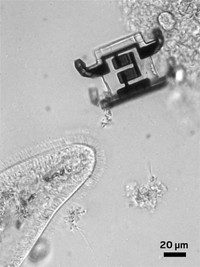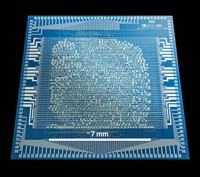Advertisement
Grab your lab coat. Let's get started
Welcome!
Welcome!
Create an account below to get 6 C&EN articles per month, receive newsletters and more - all free.
It seems this is your first time logging in online. Please enter the following information to continue.
As an ACS member you automatically get access to this site. All we need is few more details to create your reading experience.
Not you? Sign in with a different account.
Not you? Sign in with a different account.
ERROR 1
ERROR 1
ERROR 2
ERROR 2
ERROR 2
ERROR 2
ERROR 2
Password and Confirm password must match.
If you have an ACS member number, please enter it here so we can link this account to your membership. (optional)
ERROR 2
ACS values your privacy. By submitting your information, you are gaining access to C&EN and subscribing to our weekly newsletter. We use the information you provide to make your reading experience better, and we will never sell your data to third party members.
Synthesis
Unstable radicals zapped into action in microfluidic electrochemical cell
Tight space between electrodes is key to working with short-lived radicals
by Bethany Halford
June 18, 2020
| A version of this story appeared in
Volume 98, Issue 24

Chemists can couple short-lived radicals to make myriad types of molecules, thanks to a microfluidic electrochemical cell that places the anode and the cathode just 25 µm apart. The new device offers an alternative to photoredox chemistry, which generates and couples transient radicals in solution using light and a chemical catalyst.
“We’re trying to give synthetic chemists an alternative way of getting these important intermediates,” says Stephen L. Buchwald, a chemist at the Massachusetts Institute of Technology who led the research effort with Klavs F. Jensen, an MIT chemical engineer.
The microfluidic electrochemical cell features a fluorinated ethylene propylene film sandwiched between two glassy carbon electrodes. The electrodes are 25 µm apart, creating a microfluidic channel for the reagents to pass through (Science 2020, DOI: 10.1126/science.aba3823). This slim space is critical, the researchers say, because persistent radicals generated at one electrode don’t have far to travel to meet up with transient radicals generated at the other electrode. If the space were larger, the radicals would decompose before they could couple.
Song Lin, an organic electrochemistry expert at Cornell University, says that using a microfluidic device is a “clever and elegant way” to get around mass transport problems that have made it tough to do electrochemistry with radicals. “This innovation will no doubt further improve the application of electrochemistry in organic synthesis,” he says.
Using glassy carbon for the electrode materials was key, says Yiming Mo, a postdoc in Jensen’s lab who designed and built the cell. “If we use conventional electrode materials, like metals, it’s very hard to get a smooth surface. When you get the electrodes so close, they can easily touch each other and short-circuit the cell,” he says. “But the glassy carbon is extremely smooth and flat.”
As a demonstration of the platform’s synthetic capabilities, the MIT team made more than a gram of the liquid crystal compound 5CB using multiple cells stacked together (reaction shown).
There are no plans to sell the microfluidic electrochemical cells, but Mo says that it’s possible to build one using the instructions in the report’s supporting information. “We hope that people will pick it up and use it and maybe we can get some inspiration for what else you can do,” Jensen says.





Join the conversation
Contact the reporter
Submit a Letter to the Editor for publication
Engage with us on Twitter